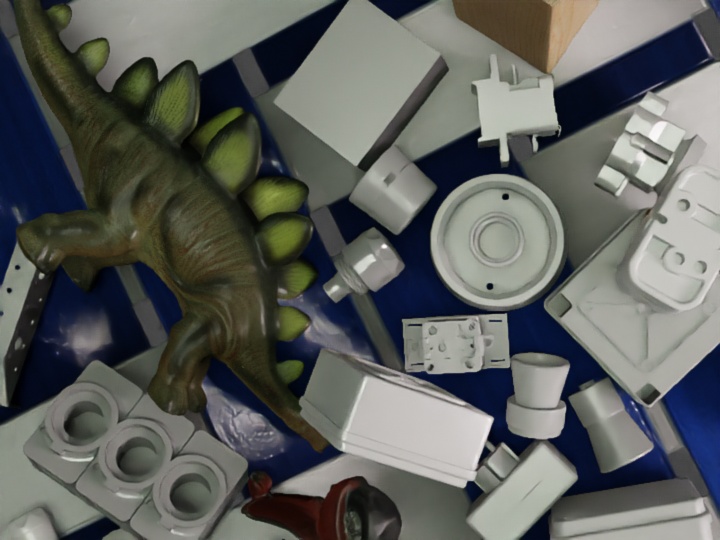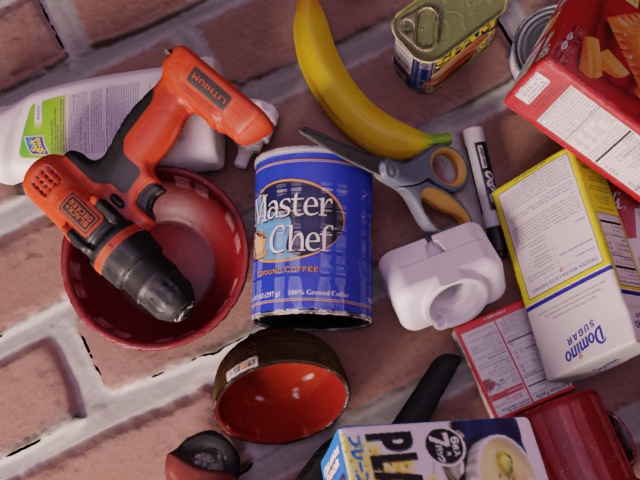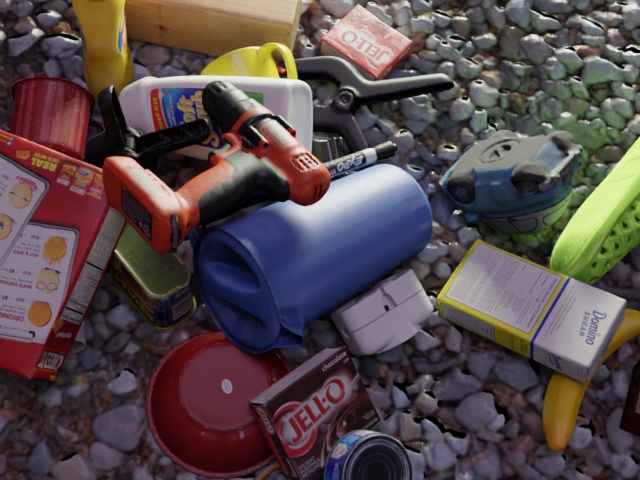Here you find the official BlenderProc implementations that we used to generate the provided synthetic data for the BOP Challenge (7 core datasets). The output datasets are saved in BOP Format in chunks of 1000 images.
The prerendered datasets with 50K images each are available here, where they are called "PBR-BlenderProc4BOP training images".
For LineMOD, the objects are placed upright on a plane based on the bop_object_on_surface_sampling example. All other datasets are created by dropping objects using physics based on the bop_object_physics_positioning example.
Here, we explain the usage with the new python format introduced in BlenderProc2, for the original config files, check below.
Download the necessary BOP datasets. Base archives and 3D models are sufficient.
Execute in the BlenderProc main directory:
blenderproc download cc_textures
The following command creates 50K training images in BOP format for the given dataset
blenderpoc run examples/datasets/bop_challenge/main_<bop_dataset_name>_<random/upright>.py
<path_to_bop_data>
resources/cctextures
examples/datasets/bop_challenge/output
--num_scenes=2000
examples/datasets/bop_challenge/main_<bop_dataset_name>_<random/upright>.py: path to the python file.<path_to_bop_data>: path to a folder containing BOP datasets.resources/cctextures: path to CCTextures folderexamples/datasets/bop_challenge/output: path to an output folder where the bop_data will be saved--num_scenes: How many scenes with 25 images each to generate
Tip: If you have access to multiple GPUs, you can speedup the process by dividing the 2000 scenes into multiples of 40 scenes (40 scenes * 25 images make up one chunk of 1000 images). Therefore run the script in parallel with different output folders. At the end, rename and merge the scenes in a joint folder. For example, if you have 10 GPUs, set --num_scenes=200 and run the script 10 times with different output folders.


